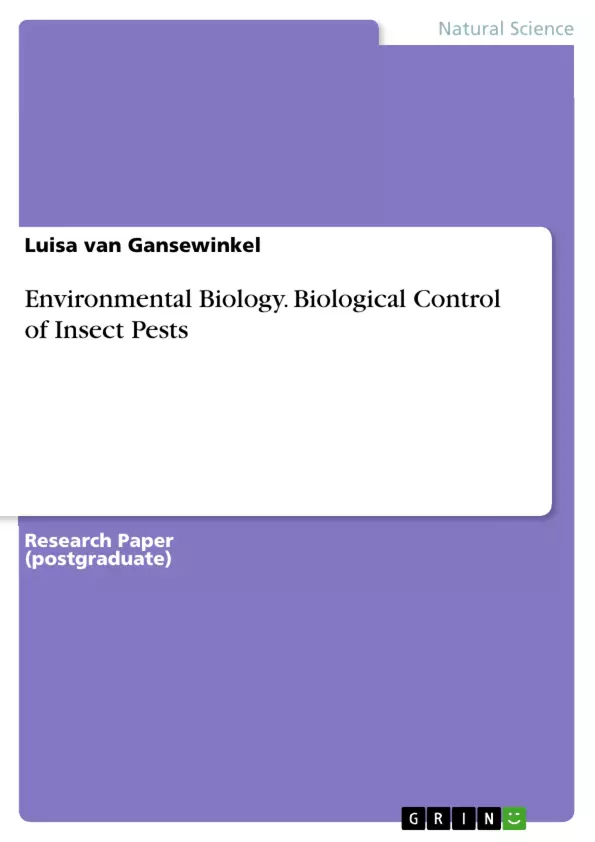This paper examines the historical and contemporary approaches to controlling insect pests in agriculture, with a primary focus on biological control methods. It delves into the three main strategies of biological control—importation, augmentation, and conservation—that utilize natural enemies to regulate insect pest populations. The context of this exploration is set against the backdrop of the challenges posed by insect-borne damage in crops, ranging from aesthetic harm to the transmission of plant diseases and significant crop consumption.
The paper highlights the evolution from natural remedies to synthetic insecticides and the subsequent reevaluation of pest control practices, leading to the establishment of Integrated Pest Management (IPM). The advantages of biological control, particularly in wooded environments, are underscored, and the three strategies are discussed in the context of their roles in pest management. The aim is to contribute to the understanding of sustainable and environmentally friendly pest control methods, encouraging a shift towards biological sources in agriculture.
Table of Contents
- Abstract
- Insect-borne damage in crops
- The DDT scandal
- Biological Control
- The Cottony Cushion Scale Project
- Advantages of Biological Control
Objectives and Key Themes
This text explores the history and advantages of biological control in managing insect pests. It aims to highlight the effectiveness of this method, particularly in comparison to chemical and other non-chemical control strategies.
- History of insect pest control methods
- The challenges of chemical insecticide use
- The emergence of biological control as a viable alternative
- The principles and strategies of biological control
- The advantages of biological control, particularly in urban and forestry contexts
Chapter Summaries
- The text begins by highlighting the long-standing problem of insect pests in agriculture. It describes the diverse range of damage caused by these pests, from aesthetic damage to crop destruction and disease transmission. The text then transitions to discuss the history of insect control methods, from natural remedies to the development of synthetic insecticides.
- The introduction of DDT in the 20th century is presented as a significant milestone in pest control. However, the text emphasizes the negative environmental impacts of DDT and its subsequent ban, which led to a greater understanding of the consequences of chemical insecticide use.
- The emergence of Integrated Pest Management (IPM) is explained as a response to the challenges of chemical control. Biological control is presented as a key component of IPM, utilizing natural predators and parasites to manage pest populations. The text then provides a detailed description of the three main strategies of biological control: importation, augmentation, and conservation.
- The Cottony Cushion Scale Project is presented as a prominent example of successful biological control through importation. The text outlines the qualities required for successful biological agents and their effectiveness in managing pest populations.
- The concluding section focuses on the advantages of biological control compared to other methods, particularly in urban and forestry environments. The text highlights the challenges associated with chemical and other non-chemical control methods in these contexts, emphasizing the suitability of biological agents as a solution.
Keywords
This text focuses on biological control, pest management, insect control, integrated pest management (IPM), natural enemies, predators, parasites, importation, augmentation, conservation, environmental impact, chemical insecticides, DDT, cottony cushion scale, biodiversity, and sustainable agriculture.
- Quote paper
- Luisa van Gansewinkel (Author), 2019, Environmental Biology. Biological Control of Insect Pests, Munich, GRIN Verlag, https://www.grin.com/document/931525



